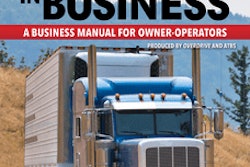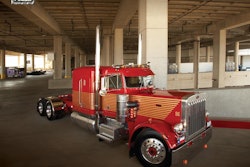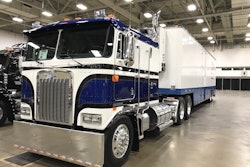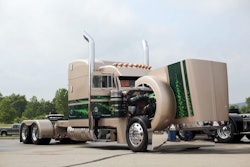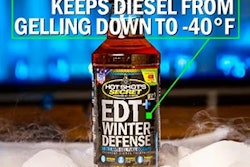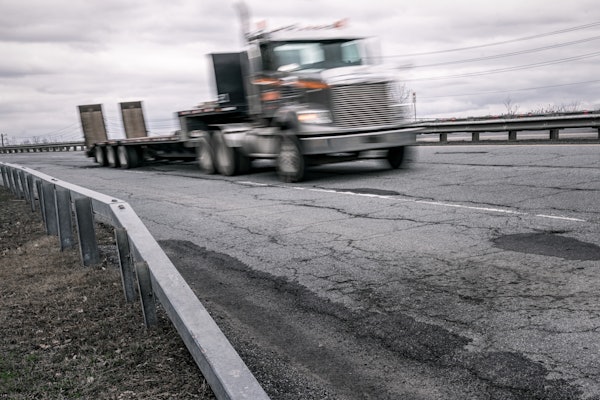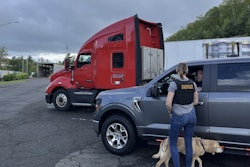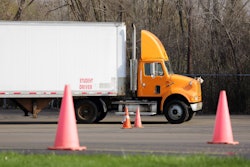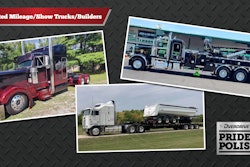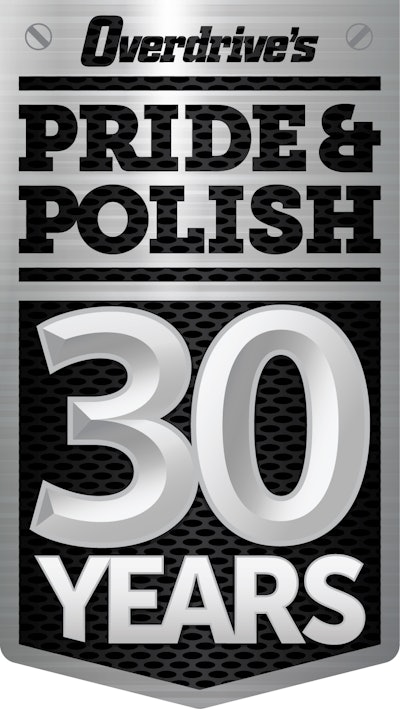 Pride & Polish is celebrating its 30th anniversary in 2020. See all of Overdrive‘s continuing coverage leading up to the 2020 Great American Trucking Show here.
Pride & Polish is celebrating its 30th anniversary in 2020. See all of Overdrive‘s continuing coverage leading up to the 2020 Great American Trucking Show here.Pride & Polish has been a mainstay in the show truck scene for 30 years now, gaining a reputation as the premier competition for truck builders, whether the trucks are used for work most of the year or purely showpieces.
The event launched in 1990 at the Mid-America Trucking Show in Louisville, Kentucky, with “just a handful of trucks,” says Linda Meaux, trade show consultant for Pride & Polish parent company Randall-Reilly. Meaux has been key in the organization of Pride & Polish since that first show and continues to help organize the event each year.
“We were at the parking lot at Mid-America where the South Wing [of the Kentucky Expo Center] is now,” she recalls of the first show. “We were in a tent with a handful of trucks in the pouring rain. It flooded the parking lot. We literally had to hold down the coolers to keep them from floating away.”
Still, as time went on, the event grew from having just a few trucks to where “we were having 100-plus trucks,” Meaux says. The event went from just the one show at MATS in 1990 to having up to five shows a year as recently as 2016. Today, Pride & Polish comes around once a year at the Great American Trucking Show in Dallas.
“We went in not really knowing what we were doing, but it just kind of fell into place,” Meaux says.
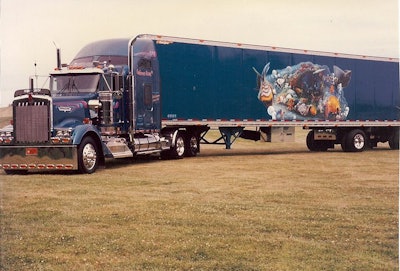 Bob and Suzanne Stempinski started showing in Pride & Polish events in 1995 with this 1995 Kenworth W900. The team-driving couple showed trucks for around six years, then Suzanne got involved in show management.
Bob and Suzanne Stempinski started showing in Pride & Polish events in 1995 with this 1995 Kenworth W900. The team-driving couple showed trucks for around six years, then Suzanne got involved in show management.Part of what has made Pride & Polish a success through the years is its “reputation for fairness, honesty and for celebrating the best of the industry,” says Suzanne Stempinski, a current Pride & Polish show organizer and former competitor with her husband, Bob. “What Pride & Polish does is it celebrates the hardest job you’ll ever love, and that’s trucking. We’re always mindful, respectful and proud of that,” she says.
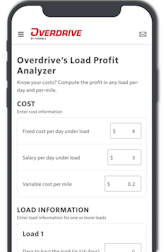
The biggest evolution the event has seen through the years has been in the trucks themselves. But the more things change with trucks, the more they stay the same in other areas of the show.
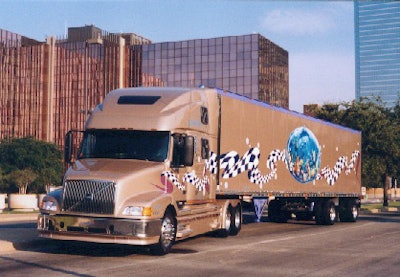 The Stempinskis went against the grain with their second truck, a 1999 Volvo VN770, “Sea Dreams.” “It was something special,” Suzanne says, “in part because there were no aftermarket parts available for a Volvo and everything we did was custom. Back then, that was an even bigger deal than it is today. Especially for one-truck owner-operators making a living and chasing adventures down the road.”
The Stempinskis went against the grain with their second truck, a 1999 Volvo VN770, “Sea Dreams.” “It was something special,” Suzanne says, “in part because there were no aftermarket parts available for a Volvo and everything we did was custom. Back then, that was an even bigger deal than it is today. Especially for one-truck owner-operators making a living and chasing adventures down the road.”“Trucks have evolved through the years, but it’s always been about being clean and shiny at Pride & Polish,” Stempinski says. “The level of detail on the trucks has amped up to a place that is simply amazing. You’d think over 30 years, you couldn’t raise the bar much higher, then somebody comes along and knocks it into orbit. But Pride & Polish itself really hasn’t changed because it still displays the best of the trucks going down the road and the best of our industry.”
Through the years, Pride & Polish had to evolve to even the playing field with different types of truck builds by adding new classes for trucks to compete in.
“We like to keep a level playing field so we’re fair to everybody, so one of the things we did was add working class, limited mileage that work less but are still capable, and builder’s class, which are strictly for show,” Stempinski says. “The only limitations on builder trucks are with the imagination and the wallet, so it’s not fair to put those in the same class as working trucks.”
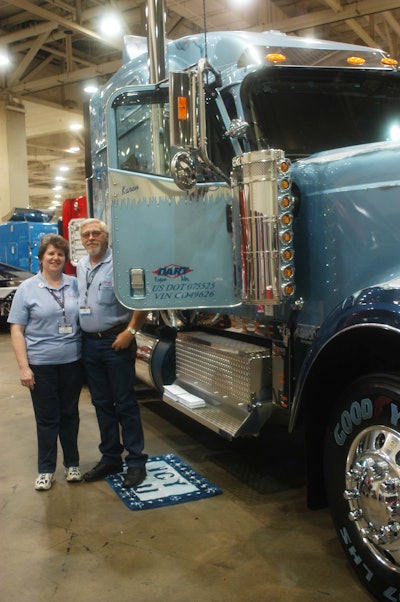 Harvey and Karen Zander were longtime Pride & Polish winners, showing Icy Blu and Icy Blu II, until they retired from the show truck circuit in 2012 after about 15 years competing.
Harvey and Karen Zander were longtime Pride & Polish winners, showing Icy Blu and Icy Blu II, until they retired from the show truck circuit in 2012 after about 15 years competing.Longtime Pride & Polish competitor Harvey Zander, who showed two trucks over the course of about 15 years with his late wife, Karen, says both of his trucks were working trucks with large murals painted on them.
The first truck, Icy Blu, was a 1996 Freightliner Classic short-hood with the depiction of Old Man Winter blowing cold air – a nod to the Zanders’ Minnesota home base. The second truck was a 2003 International 9900ix, Icy Blu II. The Zanders stuck with the theme that worked so well for them with the first truck but added elaborate murals dedicated to their children and grandchildren.
Part of the evolution Zander saw as a competitor was new and tougher categories.
“The judges got tougher every year,” he says. “If they remembered you, they’d ask if you had changed anything on the truck. Every year we had to change or make something better, or the truck would become stagnant. We were always looking at what can we do now to make it better,” with plenty work — and money — devoted to the upgrades.
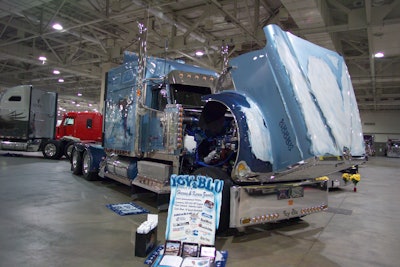 Harvey and Karen Zander’s “Icy Blu II” was a 2003 International 9900ix with murals dedicated to their children and grandchildren, keeping with the winter theme from their first show truck, a 1996 Freightliner Classic.
Harvey and Karen Zander’s “Icy Blu II” was a 2003 International 9900ix with murals dedicated to their children and grandchildren, keeping with the winter theme from their first show truck, a 1996 Freightliner Classic.Friendships, meanwhile, were forged among competitors. The Stempinskis and Zanders both say they made friends at their first competition that they still stay in contact with today.
“Whether you won Best of Show, got a second or third, or didn’t place at all, everybody was still friends,” Zander says. “There were no friendships lost over the competition.”
Stempinski adds that while the trophies picked up along the way are great, it’s the friendships made at the shows that matter.
“What do you come away with at the end besides a boost to your ego and bragging rights? Friendships that last a lifetime long after a trophy is collecting dust on a shelf, long after the truck has been sold and replaced,” she says. “You get to make connections with some of the best people in the whole world, and the friends we made on those parking lots are still our friends today.”



